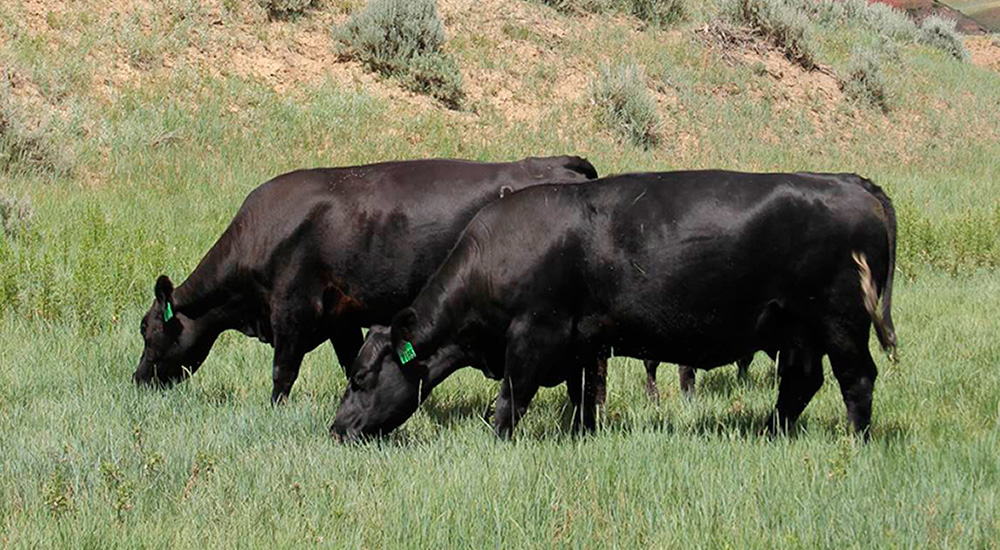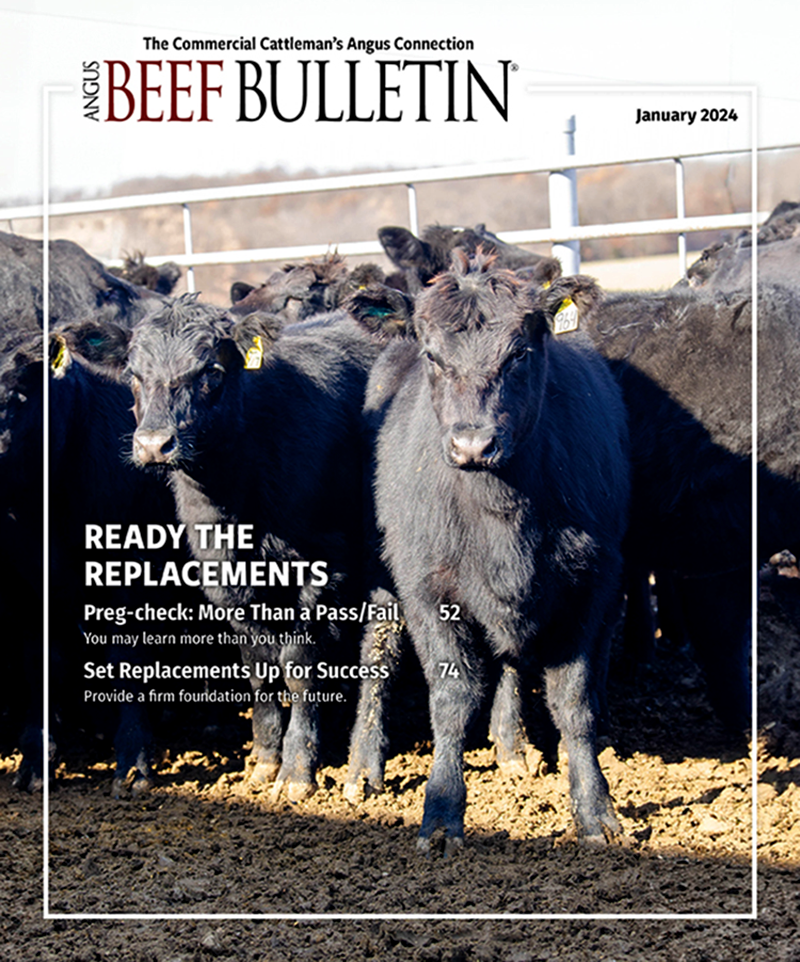
Marketing Cull Cows
Wyoming cattlemen share plans for marketing cull cows.
Neal and Amanda Sorenson of Powder River Angus are fifth-generation ranchers, raising registered Angus near Spotted Horse, Wyo. Extensive culling is part of their breeding program. Neal says there are usually several marketing options for cull cows. Any cows in his herd that will calve late are culled, but they may go to another herd.
“What is late for us may not be late for someone who is calving in May, June or later. There can be a good market for those cows. We probably sell between 60 and 80 young pregnant cows each year (ages 3 to 5). There are usually people who want them because they are calving later. These cows fit their program and have a lot of years left,” Neal says.
Rather than the sale barn, another option for marketing culls is selling younger females as recipients. Neal says many operations using embryo transfer want recips to be 6 years old or younger — cows that have had and raised at least one calf. Health is important for this market. He says they pick the young ones that are in good shape with good udders, and they get more profit for those recips. These are young cows that either lost their pregnancy after being preg-checked or lost their calf for some reason, and they don’t want to keep them another year without a calf to market.
“The recip market can be good for prime-age open cows. The price for these is usually based on [the] current cow market, adding a certain amount above that. Mine usually went to Texas or Montana. A person might be able to sell recips closer, however, because today there are more ranchers putting in embryos,” Neal adds.
You could make a private deal with a neighbor — especially if that rancher knows your breeding and management program, and knows these are healthy young cows that for some reason won’t have a calf at side this year. This might be an option for selling good cows that lost their calves due to weather.
“There were some horrendous calf losses in Montana this past winter, for instance, through no fault of the cows. These are good productive cows that might go to slaughter because their calves died in those storms, and they would make good recip cows. Just north of us at Miles City they had eight feet of snow in late winter,” Neal says.
Some of the cows that lost calves would be perfect for the recip market.
“In some areas that had heavy calf losses, a rancher might opt to keep some of those cows and put embryos in them. That would be a way to do an embryo program if they could find a good donor cow,” Neal says. “They could have a vet come put embryos into those ready-made young recip cows.”
A few ranchers keep their open cows and feed them to a better weight before selling them.
“I rarely keep an open cow after her calf is weaned. Sometimes a person might make money keeping the cull cows to put more weight on, but unless you have a lot of cheap feed, you are probably better off putting the feed into something else,” he says.
Editor’s note: Heather Smith Thomas is a cattlewoman and freelance writer from Salmon, Idaho.



